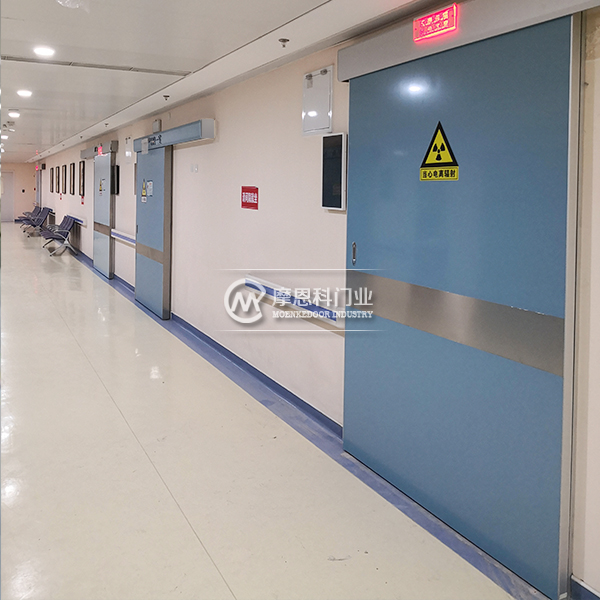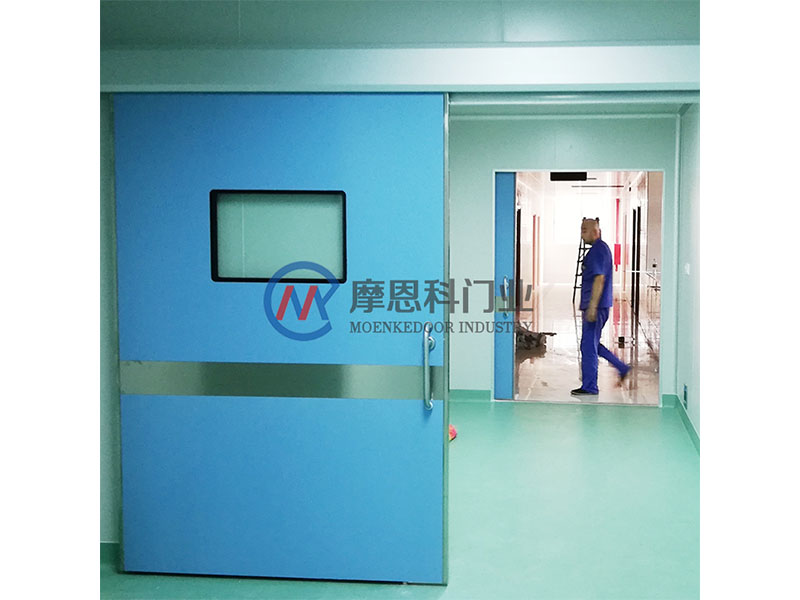The surgical doors used in hospitals have a good shielding effect on radioactive sources. Their materials are very special and expensive. In order to prolong their service life, they need to be cleaned for a long time and occupy a high position. Moreover, when cleaning, they cannot be cleaned like ordinary doors. There are many things to pay attention to. Let's take a look at them together.

Precautions for cleaning surgical doors:
Firstly, it is necessary to promptly clean the dust on the hospital's dedicated doors, keep the lead glass on the doors and edges clean, and keep the doors, laminated glass, and hardware clean and bright. Even stainless steel plates, once stained with dust and other dirt, their compounds will corrode the surface of the stainless steel plate, affecting the corrosion of the steel body for a long time, endangering the radiation characteristics of use, and causing unnecessary radiation risks.
Some pollutants are items that cannot be cleaned. For example, the hospital's dedicated doors are covered with oil stains and other dirt that cannot be directly cleaned. You can use Jieerliang for cleaning, but do not use strong alkaline or acidic water-based chemicals to clean these oil stains, as this not only easily damages the surface finish of the aluminum alloy profile, but also damages the protective film, causing oxidation of the surface and air, resulting in corrosion of the hospital door.
3. When cleaning hospital specific doors, particles and dirt inside the frame should be immediately removed to prevent blockages in drainage pipes or safety passages. Once blocked, drainage will be difficult. If the consequences are serious, it will continue to endanger the use of hospital doors, reduce their service life, and also pose safety hazards.
How to clean the operating door:
1. Medical door leaf cleaning:
The special door leaf material of the induction hospital is made of tempered glass. Due to the transparency of medical door leaves, once stains are exposed, it is necessary to carefully clean the dirty parts when cleaning the medical door leaves. Generally, dirt can be wiped with a soft cloth dipped in neutral detergent, while stubborn stains can be wiped with alcohol or gasoline.
2. Sensor cleaning
In general, the sensor of medical automatic doors is prone to dust adhesion, greatly reducing the sensitivity of the sensor and causing sensor obstacles. Therefore, when cleaning, it is necessary to "wipe" with a clean soft cloth. Be careful not to wipe the actuator during cleaning. Move the detection direction of the sensor away to avoid any change in the direction of the sensor being detected. Medical sliding automatic doors, also known as hospital operating room doors, are installed in clean rooms, clean corridors, operating rooms, and other places with similar cleanliness requirements, and are called medical doors. The dedicated controller for operating the door and the foot sensing switch have excellent performance. Medical staff only need to insert their feet into the switch box to open and close the automatic door, or they can operate it manually.
3. Surrounding cleaning:
One side of the ward door always faces outward, so when the medical door is opened, external dust, impurities, fallen leaves, and other substances can easily fall onto the operating track of the induction medical door. Therefore, when cleaning, attention should be paid to cleaning the induction door guide rail, especially the garbage on the groove of the guide rail.

There are many things to pay attention to when cleaning surgical doors. Cleaning and maintaining medical doors can prolong their service life, so cleaning work in hospitals also needs to be done carefully. The above are the precautions and recommended cleaning methods for cleaning, hoping to help you.












